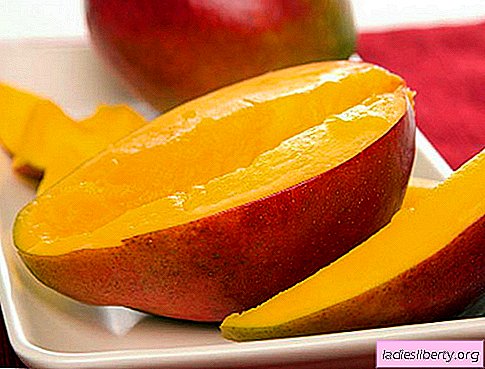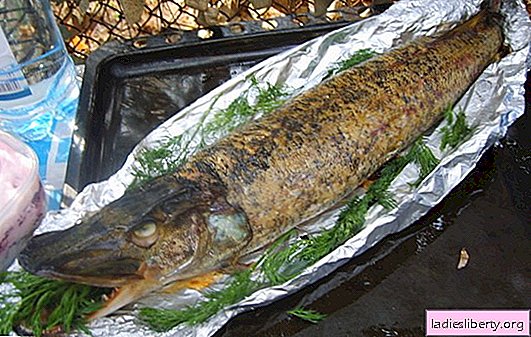
Mango Description
If for us mango is exotic, then in India it is the most common fruit and is considered one of the national symbols of this country. In Sanskrit, "mango" is translated as "great fruit." Its fruits grow on a mango tree, or as it is also called, mangifer. This is a rather tall plant, reaching a height of thirty to forty meters, with a crown diameter of about ten meters.
The birthplace of mangifers is India. It was there that this plant originated several thousand years ago. Currently, mangoes are cultivated in many countries - China, Mexico, Thailand, parts of Africa, Cuba, and the USA. In Europe it is the Canary Islands and Spain, but India is the world leader in the export of this fruit.
During flowering, the tree is covered with multiple, very fragrant inflorescences. Depending on the size of the plant, it can have from two hundred to a thousand flowers. But their fastening is quite low, so from one inflorescence with a large number of flowers, only one or two fruits are formed. The mass of which can be from two hundred grams to a kilogram. This fruit is oval, egg-shaped. Depending on the degree of maturation, its thin and smooth skin can be red, green or yellow. The ripe fruit pulp is juicy, sweet, with a large flat bone inside, has a yellow or orange color. It is very fragrant, its smell at the same time resembles a melon, a rose, an apricot, a lemon, and its own specific mango flavor. Unripe fruits have a sour or sweet and sour taste and fibrous pulp.
There are more than a thousand varieties of mangoes, of which there are dessert and technical. The former are used for the preparation of desserts, salads or eaten fresh, the latter are allowed for processing, canned goods are made of them. Mango tree can be grown as an indoor ornamental plant. Most likely, it will not produce fruits, but it will please with its beauty.
Mango - useful properties
It is not for nothing that the Indians called mango a great fruit. This treatment, and food, and the prevention of many diseases. Carotene alone in this ripe fruit is several times more than in mandarin. Not to mention vitamin A, which is also abundant. The use of mangoes is an excellent prevention of many eye diseases, dry corneas, night blindness. It contains vitamins E, D, group B, iron, phosphorus, potassium, calcium, 12 essential amino acids, sucrose, fructose, xylose, glucose. Unripe fruits are rich in vitamin C, which is several times more than in lime.
Mango fruits are useful for strengthening immunity, preventing malignant tumors, colds, strengthening the heart muscle, increasing mental performance, sexual activity. Eating mangoes will help relieve nervous tension, cheer up, overcome stress, help with stomatitis and gum disease. It is an excellent natural diuretic and anti-inflammatory.
Freshly squeezed juice is used to treat dermatitis. Or eat with food. This helps to avoid heartburn and promotes better absorption of heavy foods and fatty meats.
To avoid undesirable consequences in the form of an intestinal upset or allergic reactions, it is necessary to limit the daily intake of ripe fruit to 2-3 pieces. Unripe fruits should be limited to several segments, a larger amount can lead to irritation of the mucosa, gastric colic, and sore throat. Unripe, acidic fruits are contraindicated in diseases of the gastrointestinal tract, gout, because they contain large amounts of citric, malic and oxalic acid.
Mango - Calories
The calorie content of 100 g of mango is 67 kcal.
Mango - Cooking Use
Mango is a very popular fruit in Indian and Asian cuisines. For the preparation of various dishes, both very ripe and unripe fruits are used. They are pickled, dried, dried, made fruit, vegetable, meat salads, desserts, sauces, cooked and fried with meat, fish, baked like an apple, and many other national dishes are cooked, including the famous Indian chutney.
In Western and European cuisine, mangoes are often filled with pies, sauces, gravy for meat or fish, added to desserts, pastries, salads, or served raw, cut into slices, as an addition to cold meat dishes.
Before fresh consumption, the fruit is thoroughly washed and the peel removed. Often, these procedures are accompanied by irritation and allergic reactions to the skin. Therefore, it is better to use gloves. Fruits are recommended to be served chilled, so the inherent mango oily flavor is softened. The flesh can stain the skin of the hands, therefore, when laying the table, put a damp napkin next to the fruit or put a container of water so that you can rinse your fingers.
Examples of recipes with Mango
Recipe 1: Chicken and Mango Stew
This is a simplified version of the preparation of a real Dominican stew. The dish is prepared easily, to taste close to the restaurant. In addition to mangoes, the composition includes chicken, green peas and canned beans. Chili pepper has been added to the stew to add spice. It turns out bright, satisfying and very tasty. White wine can be replaced with rum, broth or water.
Ingredients: 800 g chicken thighs (or drumsticks), ½ mango (200 g), 400 g canned beans (white), an incomplete glass of fresh green peas (or frozen), 100 ml dry white wine (or 200 ml broth), salt, black pepper, 1 chili pepper ( or a pair of a pinch of ground burning), vegetable oil.
Cooking method
Pepper chicken thighs or drumsticks, salt. If these are large legs, divide into smaller parts and cut off excess fat and skin. Fry until crusty. Pour in wine (broth or water), add the pod (or half) of hot pepper and simmer for twenty-five minutes, reducing the heat.
Cut the mango into slices and add the peas and beans to the meat and salt. If the liquid has boiled away, it can be added a little. Stew for another five to ten minutes.
Recipe 2: Fish with Mango
Mango goes well with fish, so the taste of the dish is exceptional. Still, the main role is played by mango sauce, it is he who gives the fish a very interesting taste. The fish fillet or steak should first be fried or boiled. Any fish is suitable - salmon, cod, perch, hake, pike.
Ingredients: 600g fish fillet, 1 tablespoon each. honey and lemon juice, 1 mango, 50 g butter (for mango), vegetable oil (for fish), flour, salt.
Cooking method
Salt the fish fillet, dust in flour and fry - several minutes on each side until tender (you can boil or bake for twenty minutes in the oven).
Peel the fruit, remove the stone and cut into medium slices or slices. Stir with honey and fry for three to four minutes in butter. Pour the mango with lemon juice and pepper.
Place the fish fillet on a plate, and on top - slices of mango with sauce. You can sprinkle with parsley.
Recipe 3: Chicken and Mango Salad
If the chicken breast and eggs are already boiled, the salad is prepared very quickly. Therefore, you can cook it on a weekday for dinner to treat yourself after a hard day. Eggs and chicken will give strength and satiety, and cucumbers and mango - juiciness and bright taste, which will help to cheer up.
Ingredients: fresh cucumber (200 g), 2 steep eggs, 1 mango, 200 g canned corn, 1 boiled breast (300 g), 100 ml of natural yogurt.
Cooking method
Peel and remove the mango. Cut boiled breasts and mango into medium slices, cucumber and eggs into small cubes. Drain the liquid from the corn.
Combine all the ingredients in one bowl, season with yogurt. Taste, if not enough salt, add a little salt.
Recipe 4: Mango Chutney
Chutney - a sauce that is served with meat, fish, shrimp, chicken, to tone their taste. It stimulates appetite and promotes digestion. Chutneys are made from fruits or vegetables raw or cooked. This is a quick recipe for a delicious fresh fruit chutney. For the sauce, it is better to take slightly ripened, sour fruits.
Ingredients: mango (500g), a clove of garlic, two pinches of curry, salt, black pepper, 2 teaspoons. ready mustard (spicy, Russian, French).
Cooking method
Peel the fruit, cut into slices, chop in mashed potatoes in a blender. Add the remaining ingredients, scroll through the blender for a few seconds and the chutney is ready.
Mango - tips from experienced culinary experts
- If the unripe fruit is wrapped in a newspaper and placed in a dark place, in a few days it will come and become ripe.
- Before you buy fruit, you should smell it. It should have a light coniferous aroma, stronger in the tail area. If the fruit is absolutely odorless, then it is unripe and tasteless.











